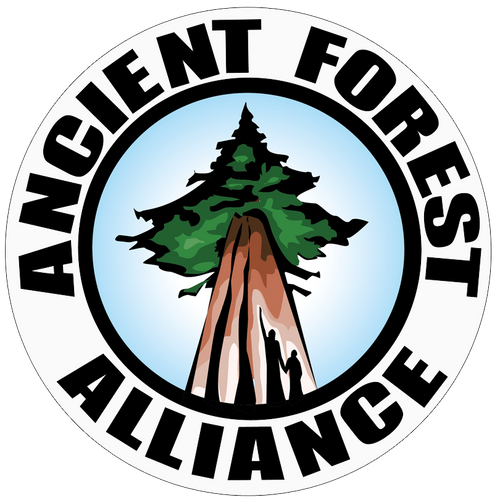
The Heart of the Harvest: An Introduction to Ethical Wildcrafting
Share
The Heart of the Harvest: An Introduction to Ethical Wildcrafting
Welcome, curious friend, to the quiet and profound practice of ethical wildcrafting. If you’re feeling the call to deepen your relationship with the natural world, you’ve come to the right place.
This isn't just a guide on what to pick. This is an invitation to explore how and why we harvest. It’s about shifting from being a consumer of the landscape to becoming a custodian of it. Here, we’ll explore the core principles that turn a simple walk in the woods into a practice of reciprocity and respect.
Beyond Harvesting: A Philosophy of Relationship
Wildcrafting is the ancient art of responsibly harvesting plants from their natural habitat. At its heart, it’s not an extraction process; it’s a relationship. This relationship is built on a foundation of five key pillars:
- Intent: Why are you harvesting? For medicine, food, or craft? Your purpose matters.
- Practice: The how—the techniques that ensure sustainability.
- Understanding: Knowing the plant, its ecosystem, and its role.
- Respect: For the plant, the land, the animals, and other people.
- Gratitude: A conscious practice of thanks that transforms the act of taking into an exchange.
When we embrace these pillars, we stop being foragers and start becoming stewards.
The Giving Back Toolkit: How Foragers Can Help the Land
A common misconception is that harvesting always harms the land. The truth is, an ethical wildcrafter can be a powerful force for ecological good. We can actively become gardeners of wild spaces.
How? Here are a few ways:
- Re-seeding: After harvesting seeds from abundant plants, scatter some in similar, suitable habitats to help the population expand.
- Weeding: Remove invasive species that threaten your target plants. Harvesting invasive blackberries for jam while clearing their smothering vines is a win-win.
- Habitat Tending: Gently clear smothering debris from around native medicinals or create brush piles for small animals with fallen branches.
- Minimize Disturbance: Gently pat down soil after harvesting roots and stick to established trails to protect fragile soil structures and native plants.
- Leave it Cleaner: Always leave a place cleaner than you found it.
A Case Study from the Kootenays:
Imagine a grove of ancient Black Cottonwoods along the Slocan River, being choked out by invasive Himalayan Blackberry. A group of wildcrafters partnered with a local conservation group. They systematically harvested the blackberry canes (for juice and jam) and cleared the root mass from the base of the trees. The result? The cottonwoods thrived, the foragers gained a delicious resource, and the biodiversity of the riverbank increased. This is ethical wildcrafting in action.
The Golden Rule: How Much is Too Much?
The most common question for any new forager is, "How much can I take?" The answer lies in the 20% Rule.
As a general guideline, never take more than 20% of a healthy population of any plant. This ensures the plant continues to thrive and reproduce and that the vast majority is left for the wildlife who depend on it.
But this is just a guideline. For slow-growing plants, rare plants, or in fragile ecosystems, take 5%, 2%, or even just a few leaves. The real rule is to harvest from a place of sufficiency, not scarcity. Ask yourself: "Do I have enough for my needs?" instead of "Do I have enough for a year's supply?" Trust that the land will provide again next year.
Case Study: Mountain Ash & The Thoughtful Tincture
Mountain Ash berries are a vital, late-winter survival food for birds. A typical jam recipe might require several cups of berries, which could strip a tree. An ethical alternative? Harvest a single, generous handful of berries. This is enough to create a powerful, medicinal tincture that will last all winter, while leaving 99% of the berries for the birds. It’s a perfect example of how a small, intentional harvest can be "enough."
Sustainable Techniques by Plant Part
How you harvest is as important as how much. Different plant parts require different approaches:
- Leaves & Aerial Parts (e.g., Nettle, Mullein): Take from the top of different plants. Never denude a single plant.
- Bark & Buds (e.g., Pine, Cottonwood):
- Pine: The inner bark (cambium) from fallen limbs can be a survival food.
- Cottonwood: Harvest the resinous buds from fallen branches for the famous Balm-of-Gilead salve.
- Never girdle a living tree. This practice is for fallen wood only.
- Roots (e.g., Dandelion, Burdock): This is a life-ending harvest. Only do this where the plant is incredibly abundant, and always replant the crown or scatter seeds.
- Berries/Seeds: Follow the 20% rule. Always leave the first and last plants you find for wildlife.
The Practice of Gratitude: It’s Not Just a Word
Gratitude is the thread that weaves all these principles together. It’s a simple, silent, or spoken "thank you." It can be an offering—a strand of hair, a song, a few seeds from your garden, or simply your full, focused attention. This conscious practice is what shifts your mindset from that of a consumer to a participant in a sacred, reciprocal relationship with the land.
Your Ethical Journey Starts Now
Embarking on the path of ethical wildcrafting is a lifelong journey of learning. It begins with the conscious decision to not just take from the land, but to care for it in return.
Start small. Pick one plant this season and learn everything about it. Let your practice be guided by intent, respect, and a deep, abiding gratitude.
Ready to go deeper?
This article is just the beginning. If you're passionate about building a respectful and reciprocal relationship with the wild plants around you, you're exactly who we're here to serve.
Subscribe to our Kootenay Wildcrafting email series to get free resources, seasonal guides, and tips on plant identification and preservation delivered directly to your inbox. Let's walk this path together.
Explore our extensive library of free, downloadable foraging guides and recipes at Foraging Resources: Free Library – Kootenay Woman

